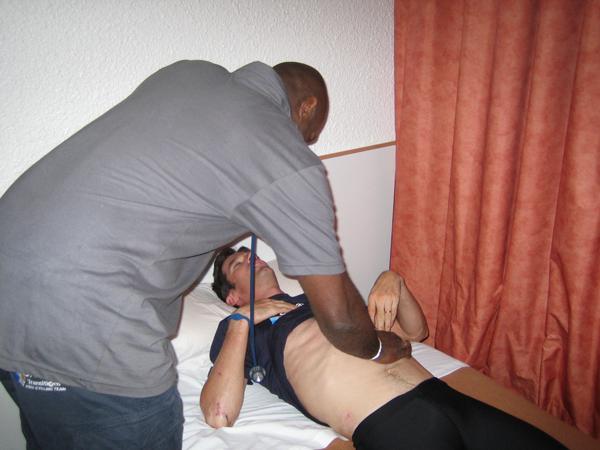AFLD expert in favour of "no needle" policy
Collaboration with police and pharma industry crucial in anti-doping fight

The scientific expert of the French Anti-Doping Agency AFLD, Michel Rieu, has spoken in favour of the "no needle" policy currently being discussed within the sport. At the moment, only a few teams including Garmin-Cervélo has implemented this, but UCI president Pat McQuaid has also recently supported the idea.
"The new approach of 'no needles', that seems to interest the UCI, is promising," Rieu told L'Equipe. "When you see the arsenal of some teams, it leaves you naturally cautious. With this new approach, a whole team would be excluded."
The Frenchman thought that banning any kind of needle use in cycling could help in the fight against doping, as well as close collaboration with criminal investigators and police. This particularly applied to substances such as growth hormone (HGH), which can only be detected over a very short period of time. "You have to be very lucky, because the detection span is only from 12 to 24 hours after the injection. So in this case, the detection not only concerns chemists but also investigators: you have to target suspect persons to catch them at the right place and the right time. According to our information, [growth hormone] is widespread in all sports. It's not a lot to get just one cyclist positive for it."
Another important step is the collaboration between anti-doping instances and the pharmaceutical industry. "A few months ago, the industry has accepted to give information on the new molecules that are being studied or tested clinically, so that we have a detection method on hand. This worked well for Hematide, a successor to EPO: two labs, including that of Châtenay-Malabry, were able to get this molecule and are working on a detection method," he revealed.
Moreover, a new section has been added to the 2011 WADA list of banned substances: that of substances that have not yet received the green light to be put on the market, but that could be used to enhance performance already by athletes willing to do anything for a victory. "Before, you could not be positive for these substances because they weren't on the list," Rieu explained further.
"For example S107, a molecule against fatigue, or GW1516, possibly already being used by some sportsmen. The Cologne laboratory has developed detection methods for these products. Gene therapy is still only in its early stages but GW1516 is a substance that acts on a certain gene's function and can orientate muscle fibre type towards endurance."
To prevent these substances from being abused in the world of competitive sports, anti-doping authorities often face the same networks than drug traffic rings. "[Doping trafficking] is less risky and offers an investment return of 10 for 1," added Rieu.
Get The Leadout Newsletter
The latest race content, interviews, features, reviews and expert buying guides, direct to your inbox!